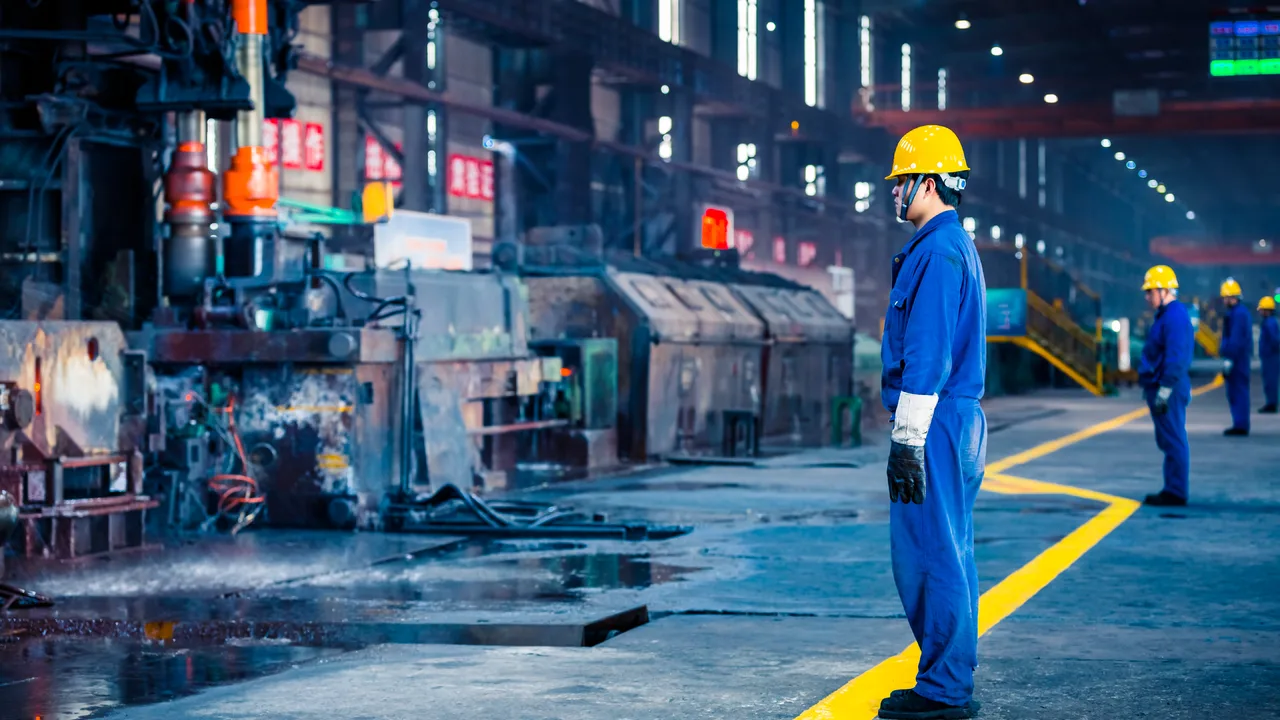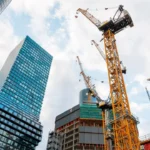In the age of Industry 4.0, where automation and digital transformation are reshaping global manufacturing, the steel structure factory has emerged as a crucial foundation for industrial progress. Designed for flexibility, durability, and integration with modern automation technologies, these facilities represent the future of intelligent production environments. As robotics, sensors, and data-driven systems continue to evolve, factories built with steel structures offer unmatched adaptability for tomorrow’s fully automated workflows.
Understanding the Modern Steel Structure Factory
A steel structure factory is an industrial building framework primarily made of prefabricated steel components, engineered to provide both strength and flexibility. Compared to conventional concrete buildings, steel factories are faster to construct, easier to expand, and more sustainable in the long term. They serve as the backbone of modern production facilities across industries—from automotive assembly lines to prefabricated housing and logistics centers.
Below is a simple comparison between traditional concrete buildings and steel structure factories:
| Aspect | Traditional Building | Steel Structure Factory |
|---|---|---|
| Construction Speed | Slow (on-site casting) | Fast (prefabricated assembly) |
| Flexibility | Limited structural adjustment | Highly adaptable to layout changes |
| Durability | Moderate | High load-bearing and corrosion-resistant |
| Expansion Capability | Requires heavy reconstruction | Easy modular expansion |
This adaptability is what makes the steel structure factory a natural fit for automation and robotics integration—two defining characteristics of next-generation production systems.
The Evolution Toward Automation
Factories have evolved from manual production spaces into intelligent, automated systems capable of continuous, self-optimizing operations. In the past, most manufacturing relied heavily on human labor for assembly, inspection, and material handling. Today, robotics integration has transformed these environments into high-efficiency ecosystems powered by precise automation.
Steel structure designs play a vital role in enabling this transformation. Their open-span layouts, high ceilings, and modular frame systems provide the perfect spatial framework for installing automated conveyor lines, overhead cranes, and robotic arms. Moreover, steel buildings can accommodate advanced electrical routing, data cabling, and smart ventilation systems essential for automated operations.
In many industrial parks across Asia and Europe, companies are converting existing facilities into steel structure factories to keep up with the demands of automated production. The combination of structural flexibility and mechanical precision makes these buildings ideal for implementing robotic technologies without the need for extensive structural modification.
Robotics Integration in Modern Steel Factories

At the core of the automated manufacturing revolution lies robotics integration. This process involves embedding robotic systems into the production workflow to execute repetitive, complex, or hazardous tasks with precision and efficiency. In a steel structure factory, robotics can be found in nearly every stage of production—from material handling and welding to assembly, inspection, and packaging.
Types of Robotics Systems in Steel Factories
- Robotic Welding and Cutting: Automated welding lines enhance precision and reduce production errors, allowing steel beams and frames to be joined flawlessly.
- Automated Storage and Retrieval Systems (AS/RS): Robots handle logistics by moving materials to and from inventory zones with minimal human intervention.
- AI-Driven Quality Control: Camera and sensor-based systems detect micro-level defects in steel components, ensuring every piece meets quality standards.
Each of these applications contributes to a fully connected factory ecosystem, where every movement is optimized through data analytics and machine learning. A steel structure factory equipped with robotics not only accelerates production cycles but also ensures consistency and safety—critical elements in large-scale manufacturing.
Benefits of Robotics Integration
By integrating robotics into a steel structure factory, manufacturers experience a range of benefits that traditional setups simply can’t offer:
| Feature | Impact on Operations |
|---|---|
| Precision and Consistency | Improved product uniformity and reduced error rates |
| Productivity | 24/7 continuous operation with minimal downtime |
| Safety | Reduced human exposure to hazardous environments |
| Cost Efficiency | Lower long-term labor and maintenance costs |
For many industrial developers, investing in a steel structure factory with built-in automation infrastructure is no longer optional—it’s a necessity for long-term competitiveness. These facilities provide the ideal environment to combine strength, space efficiency, and digital control.
Modular Design: The Key to Future Flexibility
While robotics deliver precision and productivity, modular design delivers flexibility and scalability. In a rapidly changing manufacturing landscape, businesses need factories that can adapt to new products, technologies, or capacity demands without major reconstruction. The steel structure factory answers this need through modular architecture.
Modular design allows entire factory sections—such as assembly lines, offices, or storage units—to be prefabricated and installed as independent modules. This concept aligns perfectly with steel construction, where beams, columns, and trusses can be engineered for plug-and-play installation. As production evolves, new sections can be added or replaced efficiently, minimizing downtime and cost.
Developers also favor modular steel factories for another reason: financial efficiency. Because each module can be designed, fabricated, and installed in parallel, the total project timeline is significantly reduced, allowing faster return on investment.
Below is a simplified visualization of how modular systems work within a steel structure Product environment
Sustainability and Energy Efficiency
As environmental concerns continue to influence global construction standards, the steel structure factory is increasingly recognized for its sustainable attributes. Steel, unlike many other materials, is 100% recyclable, and prefabricated production reduces waste during manufacturing. In addition, steel buildings are easier to integrate with energy-saving technologies that support modern sustainability goals.
- Recyclable Material: Steel can be reused without losing its structural integrity, contributing to a circular economy.
- Energy-Efficient Systems: Smart ventilation, LED lighting, and insulated panel systems reduce energy consumption within the factory.
- Solar Integration: Roof-mounted solar panels and daylighting systems can significantly cut energy costs.
Modern steel structure factory designs often incorporate energy management systems that use sensors to track consumption and optimize performance in real time. Combined with automation, this allows facilities to operate with both high efficiency and low environmental impact. As sustainability becomes a competitive advantage, steel structures provide the ideal base for achieving international green certifications such as LEED or BREEAM.
Digital Twin and Smart Factory Integration
One of the most transformative aspects of automation is the emergence of the digital twin—a virtual model that replicates the physical structure and operations of a factory. When applied to a steel structure factory, this technology allows engineers to monitor structural health, energy use, and production output simultaneously.
IoT sensors embedded within the steel framework continuously send data about stress levels, vibration, temperature, and humidity. These data streams are analyzed by AI systems to predict maintenance needs and detect potential failures before they occur. This predictive capability not only prevents downtime but also extends the service life of the building itself.
Furthermore, robotics integration in smart factories connects every machine and conveyor system to a centralized digital network. Supervisors can oversee multiple facilities from a single dashboard, while algorithms automatically optimize workflows and energy distribution. This fusion of digital and physical architecture redefines how industries manage productivity and sustainability.
Challenges in the Path Toward Full Automation
Despite its enormous potential, the path toward a fully automated steel structure factory presents several challenges. Among them are high initial investment costs, the need for skilled technicians, and cybersecurity concerns.
- High Initial Cost: Robotics systems and automation software require significant upfront capital, making ROI a key consideration for investors.
- Technical Expertise: Operating and maintaining automated equipment demands specialized knowledge in mechatronics and programming.
- Cybersecurity: As factories become more connected, the risk of data breaches or system disruptions also increases, requiring advanced digital protection.
However, as technology prices decrease and industrial training programs expand, these challenges are steadily becoming manageable. Governments and private organizations are also supporting digital transformation through tax incentives, grants, and innovation hubs, particularly in developing economies where manufacturing growth remains strong.
The Role of Modular Design in Overcoming Challenges
One strategic way to mitigate the challenges of automation is through modular design. By creating scalable factory units, businesses can start small and expand gradually as demand grows. Modular systems also make maintenance and reconfiguration simpler—damaged or outdated sections can be replaced without affecting the rest of the building.
In a steel structure factory, modular layouts allow engineers to integrate robotics and automation in stages, ensuring smooth transition without production delays. This phased approach balances technological ambition with financial prudence, making automation more accessible to mid-sized manufacturers.
Why Steel Structure Is the Ideal Base for Automation
Beyond flexibility and strength, the steel structure factory aligns perfectly with the requirements of automated production. Precision fabrication ensures millimeter-level accuracy—essential for the installation of robotic tracks, cranes, and automated lines. The open interior spans provide unobstructed movement for autonomous vehicles and robotic arms.
Key reasons steel is the ideal foundation for automation include:
- Structural Adaptability: Easy integration with mechanical, electrical, and robotic systems.
- Long-Term Durability: Minimal deformation over time ensures equipment stability and calibration accuracy.
- Maintenance Efficiency: Simplified inspection routines using drones or digital sensors.
- Cost-Effectiveness: Reduced lifecycle costs compared to reinforced concrete alternatives.
Together, these features make steel factories a cornerstone of industrial transformation—strong, smart, and scalable. Businesses adopting these structures today are positioning themselves for dominance in the era of intelligent manufacturing.
Future Outlook: A Fully Automated Industrial Ecosystem
Looking forward, the combination of robotics integration, modular design, and data-driven management will define the next generation of industrial development. The steel structure factory will evolve beyond a mere production site into a living ecosystem—capable of self-optimizing, learning, and interacting with other facilities through cloud-based industrial networks.
Artificial intelligence will play an even greater role, orchestrating predictive logistics, adaptive production planning, and energy management. Drones and autonomous vehicles will manage inspection and material transport, while digital twins will enable real-time control of operations across multiple continents.
In this vision, steel remains the material of choice—not only because of its physical strength but also its technological compatibility. The future of manufacturing will be built upon steel frames that support both mechanical and digital intelligence.
Conclusion
The transformation of industrial production is well underway, and the steel structure factory stands at the center of this revolution. With the rise of automation, robotics integration, and modular design, these facilities are redefining how industries approach scalability, sustainability, and productivity. As technology continues to advance, steel factories will serve as the blueprint for the factories of the future—intelligent, adaptable, and resilient.
For further insights on how automation is reshaping the industrial landscape, you can learn more from Wikipedia’s Industrial Automation article.



